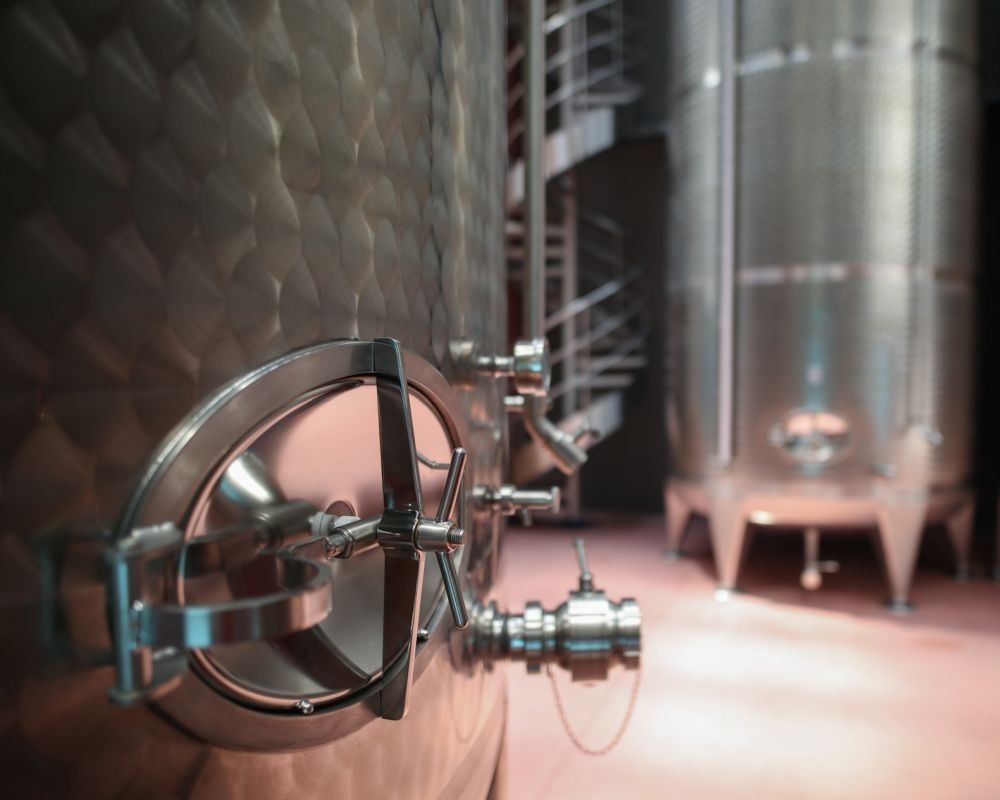Food production requires high standards of cleanliness at every stage. Appropriate standards, procedures and practices guard our health, and promote the maintenance of high quality products. Much is also required of the equipment and machinery involved in food production processes. Already in the phase of their design, many design details are taken into account that promote the preservation of an environment free of unwanted microorganisms. Equipment that is often used in various forms at many stages of production are stainless steel tanks.

The variety of tanks and silos used in food production is a direct result of the needs of the processes occurring in processing plants, and factories. Dairies, breweries, distilleries, wineries, fruit and vegetable processing plants, meat and sausage industry, oil industry, feed mills, mills – each of these areas uses specialised stainless steel tanks and silos. Importantly, both open and closed, non-pressure and pressure tanks appear in production, storage and transportation. In turn, a recognizable piece of equipment for most tanks and a large group of silos are stainless steel manways.
Manways perform several functions in tanks, however, two are key:
Thus, the installation of manways in tanks seems to be something indispensable and desirable. Unfortunately, in extreme cases, the use of an inadequate manway can become the source of many problems and dangers. One of them is contamination.
Every stainless steel manway – regardless of shape and size – consists of several primary components. One of the main ones is the flange (mounting frame), which, most often by welding, is permanently connected to the tank shell. This element is essential to the functioning of the manway, but in some cases it is a serious obstacle in terms of maintaining high hygiene standards.
The shelf formed in the interior of the tank as a result of the installation of the frame (flange) of the manway in the side shell of the tank, involuntarily becomes a place for the deposition of residual contents of the medium contained in the tank. In the vast majority of cases, washing and sterilizing the tanks after they are emptied takes care of the matter and prepares the tank to accept the next contents. In extreme cases, washing does not remove particles deposited on the frame (flange), which leads to the multiplication of bacteria and the occurrence of microbiological hazards.
The obvious solution to the problem of contaminants deposition in the tank closing area would be to eliminate the manway. However, in the vast majority of cases this is simply not possible. In such a situation, special varieties of oval (ellipsoidal) stainless manways come to the rescue: oval manways arched to the curvature of the tank.
In manways of this type, the critical structural element of the mounting frame (mounting flange) has been eliminated or extremely reduced. The bendable oval manways are successfully installed in tanks as large as 900 mm in diameter.
Models such as E126RS, E128RS or A308 are very popular with designers not only for hygienic tanks, but also for those intended to feature a unique design. The streamlined shape of the closing is particularly appreciated in breweries and wineries, where tanks are usually part of the area open for guest visits.
Against the background of oval manways arched to the diameter of the tank, the A309IG model particularly stands out.
This thoughtful and innovative design is a rarity in Europe. In addition to the absence of a frame (flange), it is distinguished by a properly contoured to the curvature of the tank, perfectly finished, polished cover, free of any pits or kinks. Many details of the manway are finished by hand, by top-notch craftsmen, which guarantees unparalleled quality and precision. What's more, the cover's unique, completely flat design gives it the ability to arch them to tanks with a minimum diameter of 700 mm.
The design features and quality of the finish of the surfaces in contact with the working medium eliminate the risk of the product adhering to the manway. For these reasons, it is a manway designed for all types of hygienic applications where the working agents are liquids and powders. The main areas of application are tanks for use in the food, dairy, cosmetic and biotechnology industries. They can also be used wherever maintaining high hygienic standards is crucial. However, it is important to remember that the application of a manway for a specific application should be preceded by a thorough analysis of the process and working environment.
We use cookies